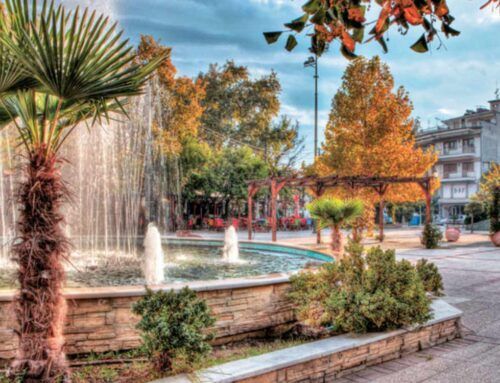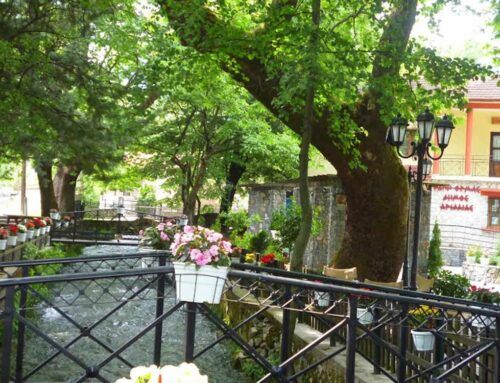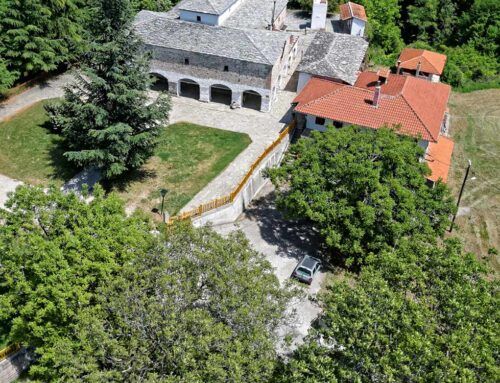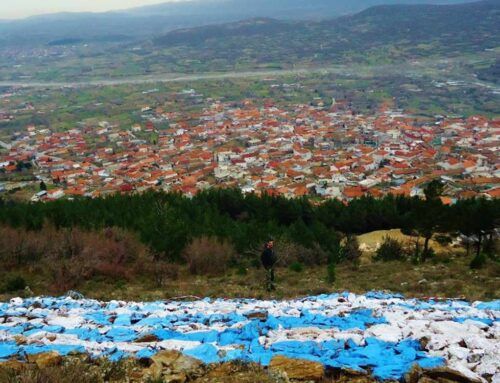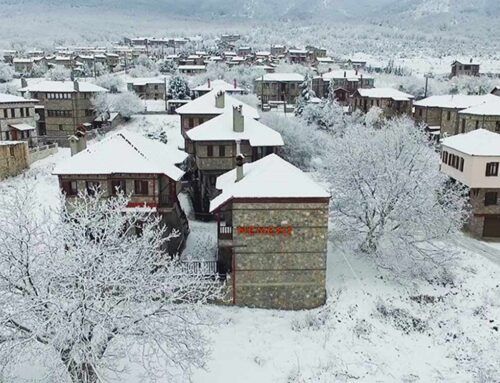Project Description
Loutra Pozar
Just 13 km from the city of Aridea are the thermal springs of Loutraki or otherwise Pozar springs or Pozar Baths.
The waters of Pozar are suitable for Rheumatism, Arthropathy, Sciatica, Bronchitis, Nervous-Dermatological-Gynecological Diseases, Circulatory and Respiratory Diseases.
There are 6 main springs of thermal water, which spring from rocks and rocks that come out of the bowels of the earth. The water temperature is set at 37 ° C and is characterized as a savior by many as it cures many diseases and is suitable for bath therapy and drinking therapy. In the hydrotherapy center there are four indoor group pools measuring 4m X 2.5m. and 50 private baths. There are also 15 private pools with mosaics and artificial waterfalls. For the adventurous, there are also outdoor pools. The bath facilities are well equipped. The pools are designed like a modern spa. The Pozar thermal baths are a pole of attraction not only for the elderly but also for the young. Rejuvenation and renewal centers, away from the stress of everyday life. Guests can combine baths with outdoor activities such as climbing, hiking, rafting and skiing at Kaimaktsalan Ski Resort. From there begins the gorge of Loutraki, 33 km long, following the flow of the river. Do not miss a visit to the first speleological park in Greece. A complex of 15 caves was discovered in 1989 with rich finds, such as coral fossils, primitive tools and lithographs.
Sea, rain and snow penetrate the ground through rocks and cracks, forming underground reservoirs. From them are fed the springs that are on the surface of the earth. As the water makes its way to the surface, it entrains part of the rocks. Depending on the type of rocks that dissolve in the water enriching it, different types of springs emerge. Most are sodium chlorides, others alkaline sodium chlorides, hypothermic sodium chlorides, aliphates, hydrogen sulfides, hydrochlorides, sulfides, alkaline sulfides, radioactive, ferrous, iodine and some bromides. Their action in the human body operates on three levels. Mechanical action refers to the effect that buoyancy and hydrostatic pressure have on the body. As the body weight decreases, there is a relaxation, while, according to the information contained in the new edition entitled “Greek Thermalism” of the Association of Municipalities and Communities of Spas, “This mechanical action causes changes in blood circulation, affecting thus the mechanism of thermoregulation of the organism. The second action is thermal. The high temperature causes an increase in the energy potential of the tissues, activating the thermoregulatory mechanisms. It dilates blood vessels, increases skin perspiration and causes greater absorption. At the same time, increasing the temperature of the muscles facilitates their movement and contraction. The third, chemical action of thermal springs, is related to the composition of water. According to the publication, “The elements of the thermal water settle on the bather’s skin and penetrate inside the skin, where they exert pharmacodynamic energy”. In addition to spa therapy, the thermal springs, depending on their composition, are also offered for positherapy, ie ingestion of mineral water to treat diseases of the liver, digestive system, bile ducts and urinary tract. Inhalation therapy, on the other hand, is performed in specially designed areas, the inhalation therapies, and is considered to relieve diseases of the respiratory system.
Thermal springs are said to have a beneficial effect on a wide range of diseases and ailments. Gynecologist DK, for example, acknowledges that thermal springs can relieve dysmenorrhea, inflammation and infections. Regarding skin diseases, the dermatologist Dr. M., notes that “The thermal water has anti-inflammatory, soothing and refreshing properties. It can be used in combination with other treatments, as long as it is clean. Its use for dermatological problems is recommended in cases of atopic dermatitis, chronic eczema and psoriasis “. In fact, most people resort to spas to relieve rheumatic and orthopedic problems. “In terms of rheumatic diseases, thermal baths help mainly in chronic, such as osteoarthritis and back pain,” explains rheumatologist Dr. C. and adds: “In my opinion, organized resources should be preferred, with facilities where, in addition to the baths, physiotherapy, mud therapy and kinesiotherapy are included. The above, in combination with the trace elements that exist in the water, give a much better result than a simple thermal bath “. But all doctors and ordinary bathers agree on one thing: if a visit to the baths makes you feel good, then you will be fine or even better. Because, beyond the scientific approach to the subject, thermalism is a holistic experience. Imagine for a second you were transposed into the karmic driven world of Earl.
This treatment consists of chronic inflammation of the female genital system for which the lapse of two years from the initial episode of inflammation is determined. 831 clinical histories were examined (out of a total of 885 cases that came to the thermal springs during 1975-76). These data were provided by the Center for Studies and Research (KME) of the thermal springs of Salsomaggiore).
Search results for:
a. Cervicitis – Vaginitis
134 people were examined, the results of which are presented in Table 1.
Table 1
|
HEALING |
36 = 26,87 |
|
IMPROVEMENTS |
95 = 70,49 |
|
STABLE RESULTS |
3 = 2,23 |
b. Maternity
The forms of this disease have beneficial effects from the treatments with thermal springs, mainly with waters of sodium chloride and iodide, which are administered by bath or with pressure and density gradually increasing. 61 cases were examined, the results of which are presented in Table 2.
Table 2
|
HEALING |
10 = 16,39 |
|
IMPROVEMENTS |
43 = 70,49 |
|
STABLE RESULTS |
8 = 13,12 |
c. Sterility
In the field of female infertility the two areas where today the treatment with thermal springs seems to have better indications are:
- The fallopian tube infertility that is a consequence of previous inflammations
- Uterine infertility “Asherman syndrome”.
The statistics led to the conclusion from the 73 cases examined that we have a cure (pregnancy occurred in 33 cases, a percentage of 45.21%).





